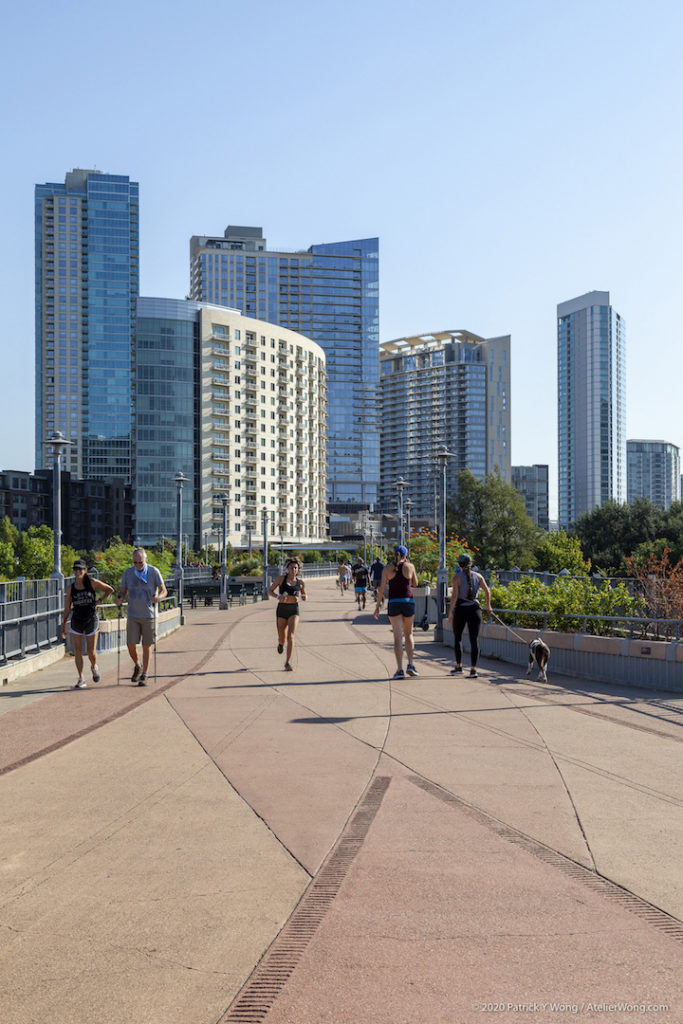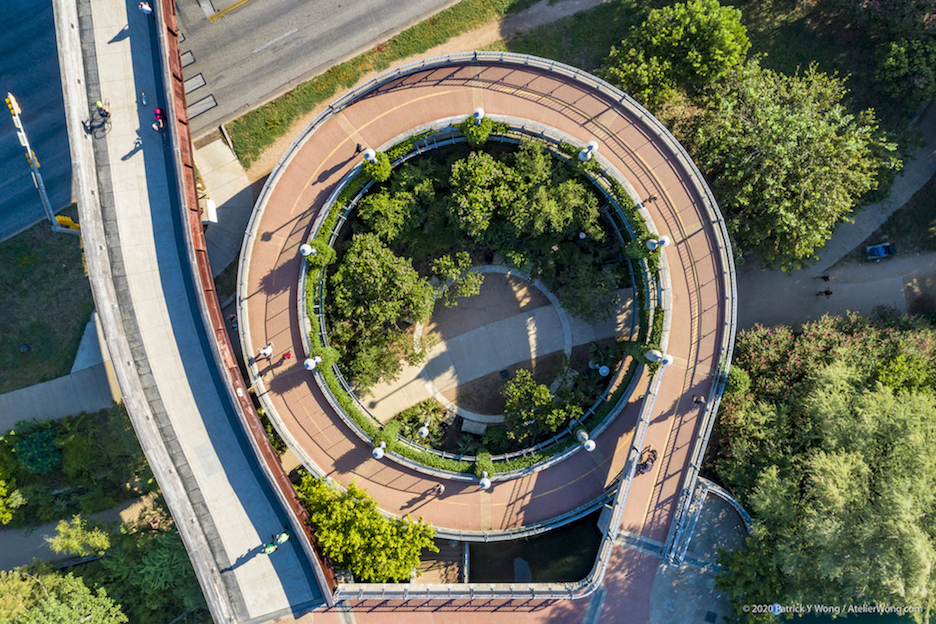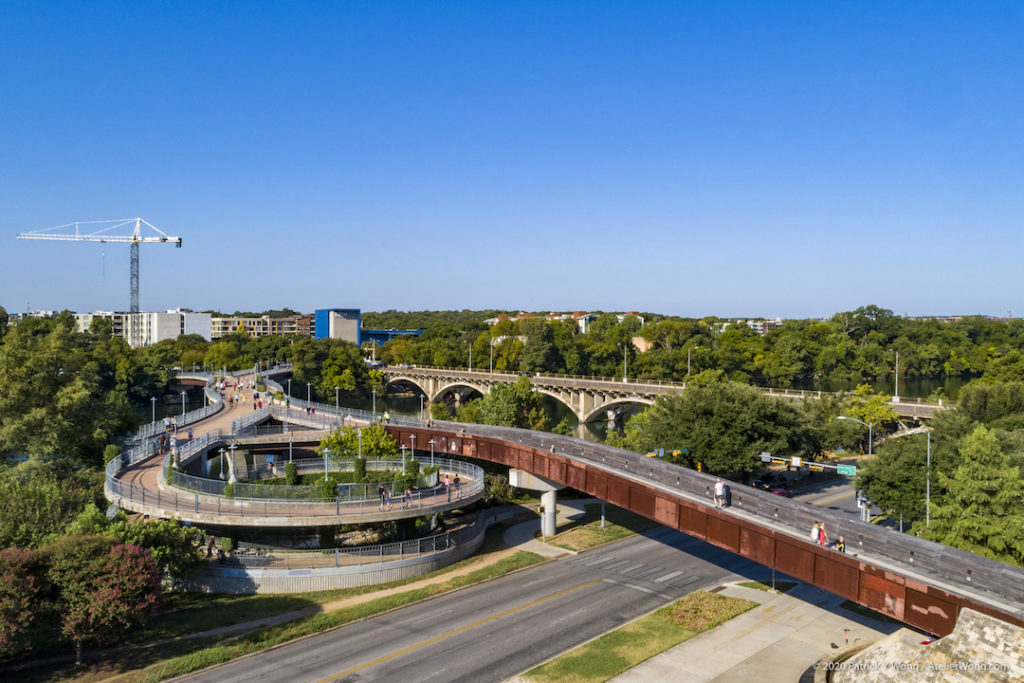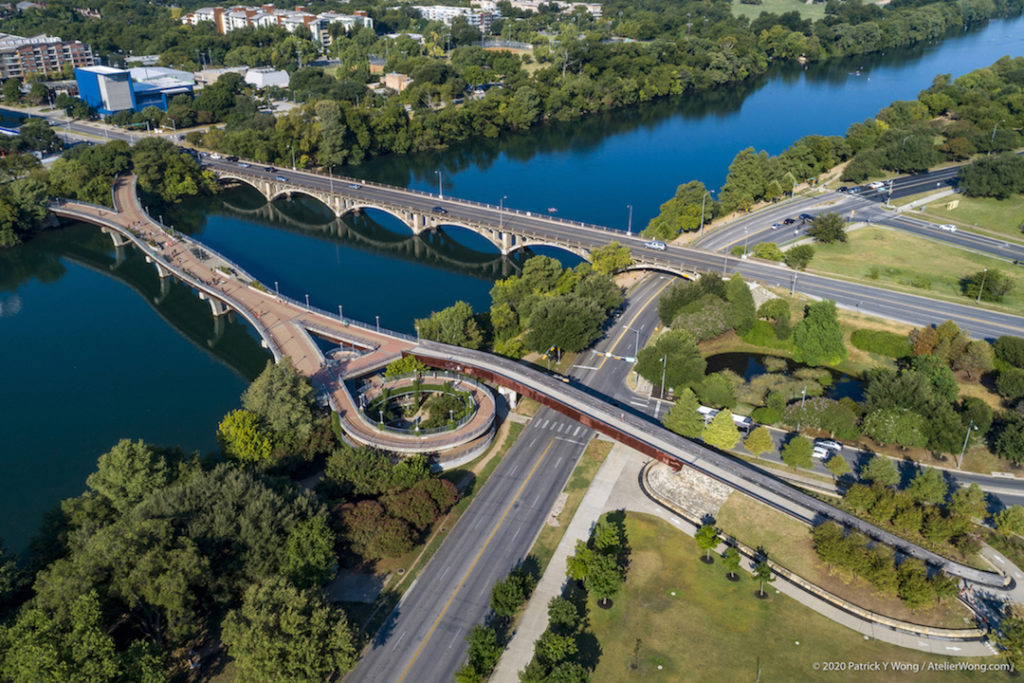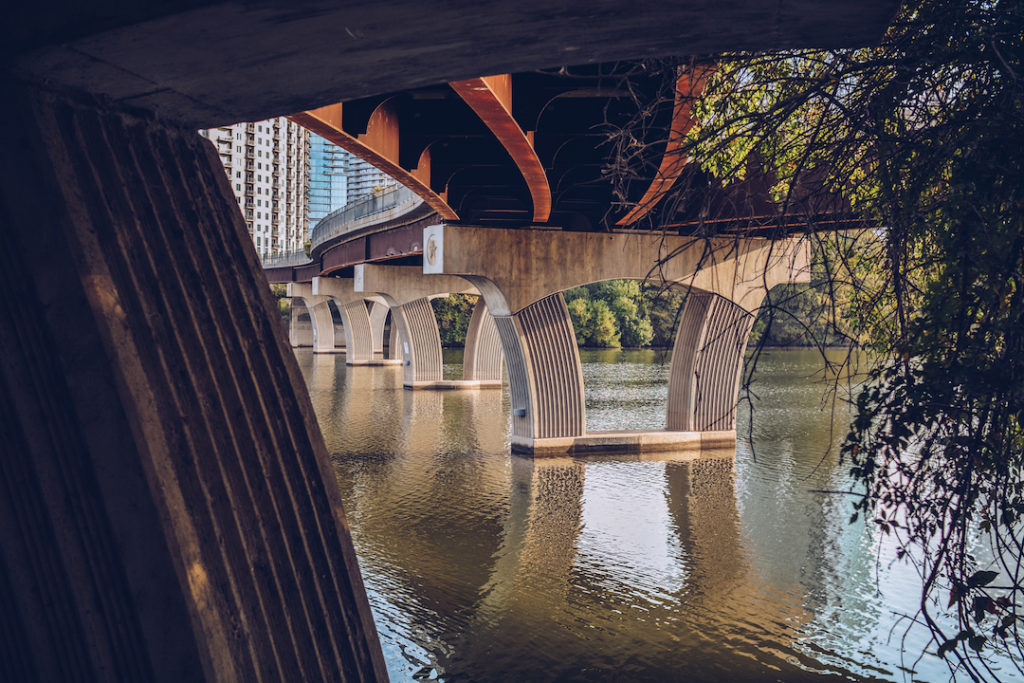As Austin’s population has exploded in recent decades, the city’s infrastructure has struggled to keep up with the additional demand for accessible public outdoor space. Completed in 2001, the James D. Pfluger Pedestrian Bridge was built to handle the massive increase in foot traffic along the hike-and-bike trail. Perched upon a series of arching concrete piers, the bridge’s graceful double-hourglass shape functions as both transportation infrastructure and a public gathering space.
Located about 200 feet to the west, the Lamar Boulevard Bridge was constructed before the creation of Lady Bird Lake and the hike-and-bike trail that encircles it. Although the handsome Art Deco structure has withstood the test of time, its narrow sidewalks were never intended to accommodate the thousands of runners, cyclists, strollers, and wheelchairs that crossed its span by the end of the twentieth century—a shortcoming that was highlighted by a series of deadly accidents.
The unique design of the pedestrian bridge is the result of a series of public workshops held by architectural firm Carter Design Associates. Workshop participants suggested a bridge made up of two curves that would connect important access points on the north and south shores. The concept was refined into what you see today: a double-hourglass shape made up of two arched avenues that come together to form a generous public gathering space at the midpoint of the river.
The layout of the bridge deck—dotted with benches, planters, and lampposts—provides plentiful options for trail users to take in the view. Below, the concrete piers offer a welcome perch for kayaks and paddleboards. Between the piers, a series of curved weathered steel girders support the bridge deck (other examples of weathering steel along the trail may be found in the railroad bridge just to the east, as well as the Miró Rivera Restroom and Heron Creek Restroom). On the north shore, a double-helix ramp surrounds a garden of native plants. An extension added in 2011 completed the bridge’s connection to the Seaholm Waterfront.
The bridge is named after James D. Pfluger, FAIA, a local architect who designed the trails surrounding Lady Bird Lake. Pfluger is also memorialized with an annual award granted by the Texas Society of Architects in recognition of community service that has a positive impact on urban, environmental, or neighborhood issues. – Bud Franck

